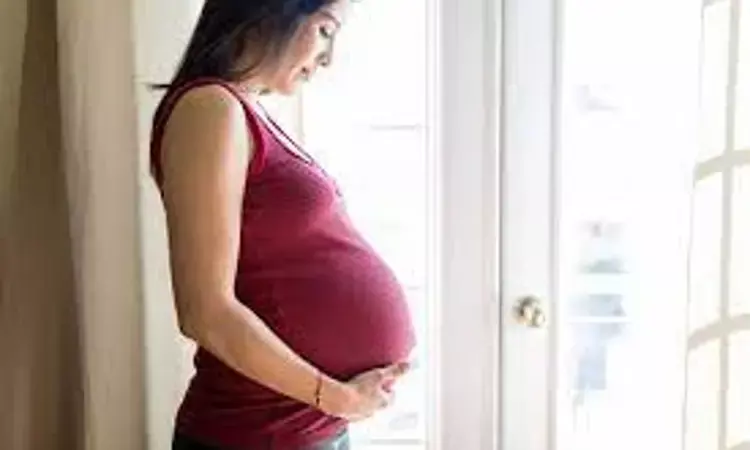- Home
- Medical news & Guidelines
- Anesthesiology
- Cardiology and CTVS
- Critical Care
- Dentistry
- Dermatology
- Diabetes and Endocrinology
- ENT
- Gastroenterology
- Medicine
- Nephrology
- Neurology
- Obstretics-Gynaecology
- Oncology
- Ophthalmology
- Orthopaedics
- Pediatrics-Neonatology
- Psychiatry
- Pulmonology
- Radiology
- Surgery
- Urology
- Laboratory Medicine
- Diet
- Nursing
- Paramedical
- Physiotherapy
- Health news
- Fact Check
- Bone Health Fact Check
- Brain Health Fact Check
- Cancer Related Fact Check
- Child Care Fact Check
- Dental and oral health fact check
- Diabetes and metabolic health fact check
- Diet and Nutrition Fact Check
- Eye and ENT Care Fact Check
- Fitness fact check
- Gut health fact check
- Heart health fact check
- Kidney health fact check
- Medical education fact check
- Men's health fact check
- Respiratory fact check
- Skin and hair care fact check
- Vaccine and Immunization fact check
- Women's health fact check
- AYUSH
- State News
- Andaman and Nicobar Islands
- Andhra Pradesh
- Arunachal Pradesh
- Assam
- Bihar
- Chandigarh
- Chattisgarh
- Dadra and Nagar Haveli
- Daman and Diu
- Delhi
- Goa
- Gujarat
- Haryana
- Himachal Pradesh
- Jammu & Kashmir
- Jharkhand
- Karnataka
- Kerala
- Ladakh
- Lakshadweep
- Madhya Pradesh
- Maharashtra
- Manipur
- Meghalaya
- Mizoram
- Nagaland
- Odisha
- Puducherry
- Punjab
- Rajasthan
- Sikkim
- Tamil Nadu
- Telangana
- Tripura
- Uttar Pradesh
- Uttrakhand
- West Bengal
- Medical Education
- Industry
Low levels of PAPP-A concentrations in first trimester linked to development of Fibroids

Low levels of PAPP-A concentrations in first trimester linked to development of Fibroids, according to a new study.
In the study published in the Journal of Obstetrics and Gynaecology Researchers have revealed that low first-trimester pregnancy-associated plasma protein-A (PAPP-A) multiples of the median (MoMs) (<0.5) are associated with noncavity distorting intramural uterine leiomyomas, also known as fibroids, that are >5.5 cm.
Reliable aneuploidy risk estimation in the first trimester is prominently interconnected with the accurate assessment of maternal serum biomarkers. Some maternal factors like insulin-dependent diabetes, weight, and rhesus status are known to alter levels of these biomarkers. Adjustment of biomarker values for specific factors is crucial to avoid excessive invasive procedures or missed diagnoses. We aimed to investigate the effects of noncavity distorting intramural uterine fibroids on first-trimester aneuploidy screening test maternal serum biomarkers.
Pregnant women who underwent a first-trimester aneuploidy screening test in a single tertiary centre between 2011 and 2020 were retrospectively assessed. One hundred ninety-eight women were found to have at least one noncavity distorting intramural uterine leiomyoma (Figo type 3–6) of at least 2 cm diameter and the remaining women were assigned as controls. First-trimester aneuploidy screening test parameters were compared.
Results:
Pregnancy associated plasma protein-A (PAPP-A) MoMs were found significantly lower in leiomyoma group in comparison to control group (1.19 ± 0.60 MoM vs. 1.40 ± 0.73 MoM, p = 0.002). PAPP-A MoMs in women with leiomyomas larger than 5.5 cm were significantly lower in comparison to both control group and women with ≤5.5 cm leiomyomas (0.82 ± 0.376 vs. 1.40 ± 0.73, p < 0.001; 0.82 ± 0.376 vs. 1.33 ± 0.61 p < 0.001, respectively). PAPP-A MoM and size of leiomyoma were found inversely correlated when fibroid size exceeds 5.5 cm (r = −0.467, p < 0.001).
Thus, Noncavity distorting intramural uterine leiomyomas >5.5 cm are associated with low first trimester PAPP-A MoMs (<0.5). PAPP-A concentrations are inversely correlated with fibroid size in women with >5.5 cm intramural uterine leiomyomas. Fibroids ≤5.5 cm are not associated with alterations in first trimester aneuploidy screening test parameters.
Reference:
Low first-trimester maternal serum PAPP-A concentrations in women with non-cavity-distorting intramural uterine fibroids by Alper Kahraman et al. published in the Journal of Obstetrics and Gynaecology Research.
https://doi.org/10.1111/jog.15188
Dr. Shravani Dali has completed her BDS from Pravara institute of medical sciences, loni. Following which she extensively worked in the healthcare sector for 2+ years. She has been actively involved in writing blogs in field of health and wellness. Currently she is pursuing her Masters of public health-health administration from Tata institute of social sciences. She can be contacted at editorial@medicaldialogues.in.
Dr Kamal Kant Kohli-MBBS, DTCD- a chest specialist with more than 30 years of practice and a flair for writing clinical articles, Dr Kamal Kant Kohli joined Medical Dialogues as a Chief Editor of Medical News. Besides writing articles, as an editor, he proofreads and verifies all the medical content published on Medical Dialogues including those coming from journals, studies,medical conferences,guidelines etc. Email: drkohli@medicaldialogues.in. Contact no. 011-43720751


